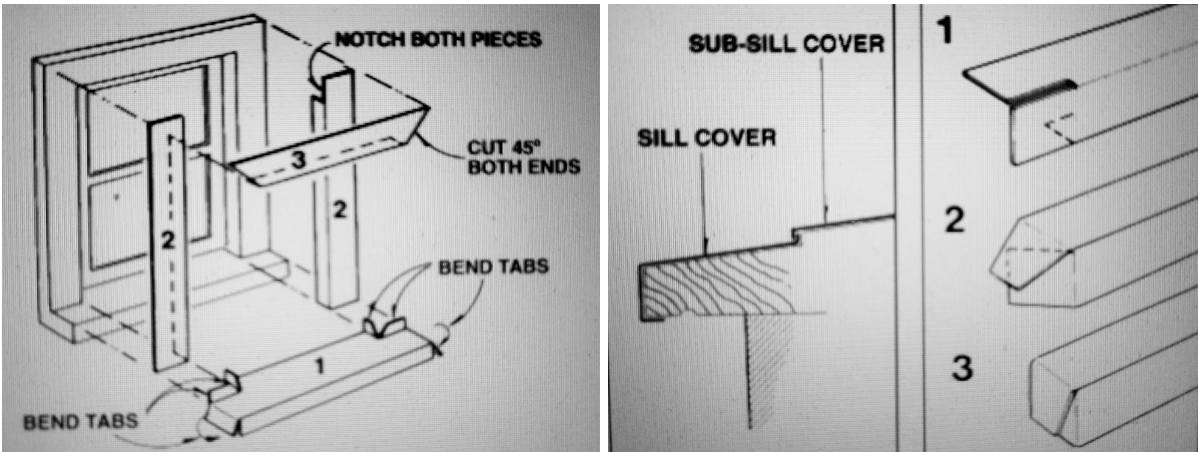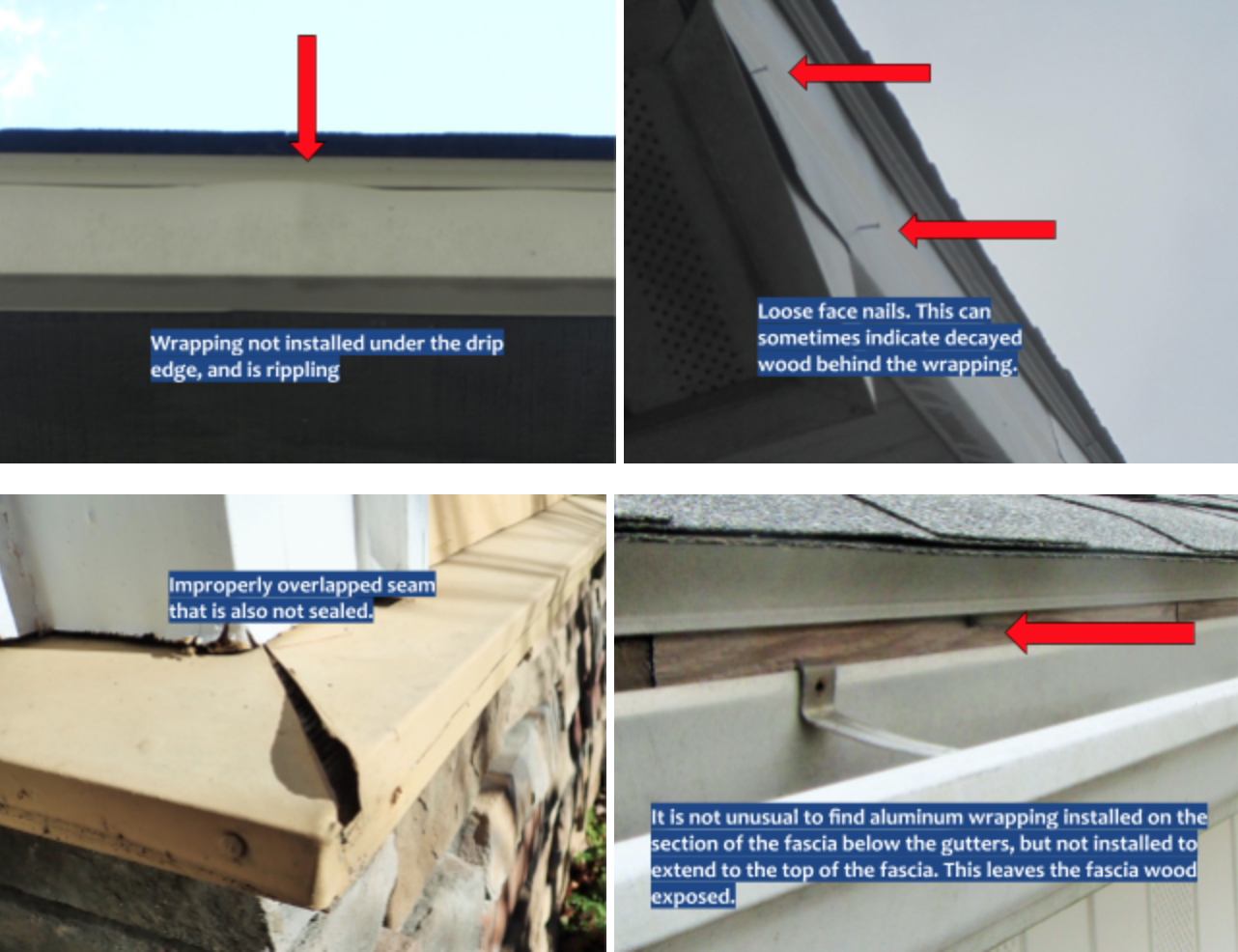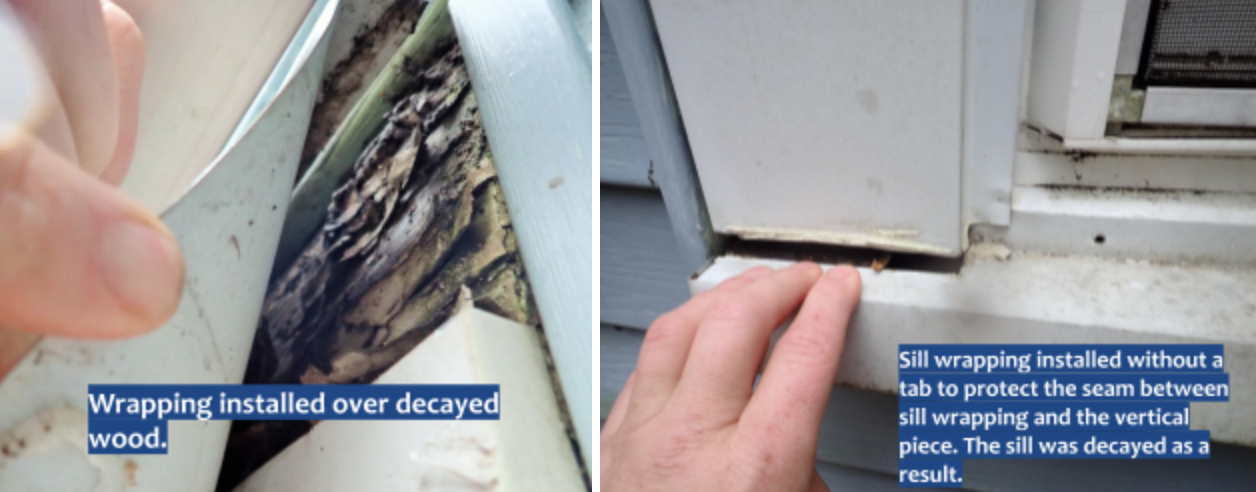When it is time to update your siding of your home, depending upon the type of siding you are installing, it is often recommended that you have the wood trim around doors, windows, fascia, soffits, etc wrapped with aluminum. This type of wrap is designed to be formed around your trim to take the place of having to paint your wood trim every so often and reduce the amount of time you spend on maintaining the exterior of your home.
MY JOB:
My job during a home inspection is to seek and find any exterior component that is not functioning like it should, is not watertight and is causing damage due to leaks and needs repair. Below are the installation guidelines your aluminum wrapping installer should follow to ensure the longevity and water tightness of the wrapping. When I see these things, I know there is a really good chance the wrapping is functioning like it should:
1) Avoid wrapping pressure-treated lumber. Aluminum in contact with pressure-treated lumber can deteriorate fast. If it is necessary to wrap treated wood, a protective layer of house wrap should be applied first.
2) The aluminum should not be installed too tightly. It needs room for expansion and contraction or it will ripple, buckle, or bulge. To help prevent this rippling effect, the installer should also do the following:
a) Use a thicker and stiffer material.
b) Hem the wrapping to thicken the edges and stiffen the material.
c) Drill oversized holes where nails will be placed to allow for expansion and contraction.
d) Limit face-nailing the wrapping as much as possible by inserting the top of the wrap under the edges of other flashing material.
3) Where there must be joints, the joints need to be overlapped in the proper direction and overlapped the proper amount to ensure the joints are water tight. At rakes, windows, and doors, the wrapping needs to be installed in pieces from the bottom up with each piece overlapping the other so that water drains from one piece to another.
4) The wrapping should cover all underlying wood, and caulk should be applied where necessary to prevent water penetration behind the wrapping.
5) Wrapping door and window trim: As already stated, the material needs to be installed from the bottom up with each piece overlapping the other so that it drains from one piece to another.
a) The window sill: The sill is the bottom trim. When forming the material around the sill, the ends will need to be snipped into tabs and secured at these tabs.
b) The vertical trim: The vertical trim pieces are installed over the tabs of the sill pieces.
c) The top horizontal trim: The top horizontal trim is installed over the vertical trim and the corners are mitered.
See diagram below:


6) The wrap should always be installed over solid wood that is in good condition. If there is any decayed wood, it should be removed and replaced prior to wrapping it.
The following are a few concerns I am on the search for when inspecting any aluminum wrapping installed on a home.


CONCLUSION:






 >
>